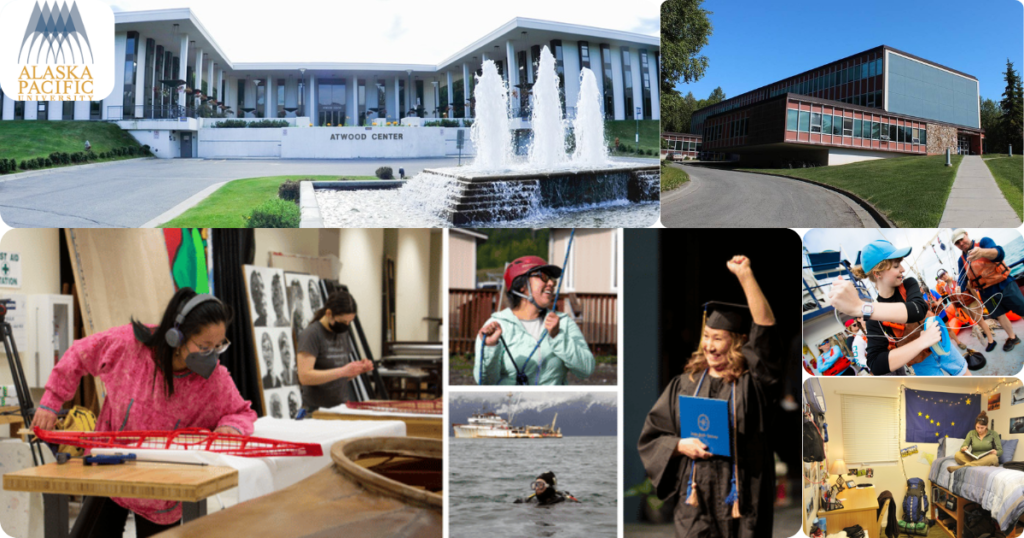Alaska, known for its awe-inspiring landscapes and unique cultural heritage, offers a distinct environment for studying art. The state provides a nurturing ground for creativity, drawing inspiration from its natural beauty, Native cultures, and thriving contemporary art scene. For students seeking to pursue art at a higher education level, several colleges in Alaska stand out for their programs, faculty expertise, and facilities.
This guide provides an in-depth look into the best colleges for art in Alaska, outlining what makes each institution exceptional and how they help aspiring artists thrive.
Why Study Art in Alaska?
Alaska offers a distinct blend of opportunities for art students:
- Natural Inspiration: With vast wilderness, stunning natural beauty, and dramatic seasonal shifts, Alaska serves as a constant source of inspiration for landscape artists, photographers, and nature-focused creatives.
- Cultural Diversity: Alaska’s rich history of Native Alaskan traditions, combined with contemporary influences, provides students with access to a wealth of cultural heritage that can inform their artistic practice.
- Unique Art Scene: Alaska has a growing community of contemporary artists, galleries, and exhibitions, offering students opportunities to connect with the local and national art world.
Also read, Art colleges in Alabama
Top Colleges for Art in Alaska
1. University of Alaska Anchorage (UAA)

The University of Alaska Anchorage stands as one of the most respected institutions for art education in Alaska. The university offers comprehensive programs in various art forms, from painting and sculpture to digital media and graphic design. UAA’s Art Department emphasizes both the technical mastery and conceptual understanding required to succeed in the art world.
- Degree Programs: Bachelor of Fine Arts (BFA), Bachelor of Arts (BA) in Art
- Facilities: UAA boasts state-of-the-art facilities, including studios for ceramics, printmaking, and digital media labs.
- Faculty: The faculty at UAA are accomplished artists and scholars with significant national and international recognition.
- Student Opportunities: Students benefit from a dynamic range of extracurricular activities, exhibitions, and internships within Anchorage’s vibrant art scene.
2. University of Alaska Fairbanks (UAF)

The University of Alaska Fairbanks offers a well-rounded art program that encourages students to explore their creativity while developing critical technical skills. UAF’s Department of Art provides a variety of degree programs and courses, from traditional mediums to digital art, ensuring students can build versatile skillsets.
- Degree Programs: Bachelor of Fine Arts (BFA), Bachelor of Arts (BA) in Art
- Key Focus Areas: UAF places strong emphasis on studio arts, including drawing, painting, sculpture, and ceramics.
- Cultural Engagement: The university has close ties with Indigenous Alaskan art and culture, providing students with unique learning experiences.
- Research and Exhibitions: UAF students often engage in research projects and exhibitions that delve into the intersection of art, science, and the environment.
3. Alaska Pacific University (APU)

Alaska Pacific University is a smaller liberal arts institution that offers a personalized approach to art education. While APU does not have a dedicated fine arts program, students interested in art can pursue customized courses through the university’s interdisciplinary studies programs, integrating art with other fields such as environmental studies or psychology.
- Interdisciplinary Approach: APU encourages students to blend art with other academic interests, offering flexibility in how they structure their studies.
- Outdoor Inspiration: Given APU’s emphasis on outdoor education, students can incorporate Alaska’s natural beauty into their creative works.
- Collaborative Environment: APU’s smaller student population allows for closer faculty mentorship and more collaborative projects.
Key Elements of a Strong Art Program
When choosing an art program, it is essential to consider several factors that will influence your educational experience and future career as an artist.
1. Curriculum and Specializations
Look for programs that offer a diverse curriculum covering multiple mediums such as painting, sculpture, graphic design, and digital arts. Strong programs will also have specializations in areas like photography, ceramics, or textile arts, enabling students to hone specific skills that align with their interests.
2. Faculty Expertise
Faculty expertise is crucial in determining the quality of education. Seek out colleges with faculty members who are not only experienced educators but also practicing artists with a portfolio of exhibitions and industry involvement.
3. Facilities and Resources
The availability of well-equipped studios, digital labs, and exhibition spaces can significantly enhance your learning experience. Institutions with updated technology and resources will enable students to experiment across mediums and create professional-grade works.
4. Student Opportunities and Networking
Beyond the classroom, students should have opportunities to display their work, participate in internships, and collaborate with professional artists. Colleges that are well-connected to the local and national art scenes offer valuable networking possibilities for future careers.
Career Paths for Art Graduates
Graduating with a degree in art opens doors to a wide array of creative and professional opportunities. Some of the most common career paths include:
- Fine Artist: Working as an independent artist, creating original works for galleries, exhibitions, or private collectors.
- Graphic Designer: Using digital tools to create visual content for brands, companies, and agencies.
- Art Educator: Teaching art in schools, universities, or community settings, sharing knowledge and passion with the next generation of artists.
- Art Conservator: Preserving and restoring historical artworks for museums or private collectors.
- Curator: Organizing and managing art exhibitions, ensuring that collections are presented in an engaging and educational manner.
Conclusion
For students looking to explore the world of art, Alaska offers a unique and enriching environment for artistic growth. From the University of Alaska Anchorage’s comprehensive programs to the personalized approach of Alaska Pacific University, the state’s institutions provide a range of options for aspiring artists to thrive. With stunning natural surroundings, diverse cultural influences, and a supportive art community, Alaska is an ideal place to launch a creative career.



